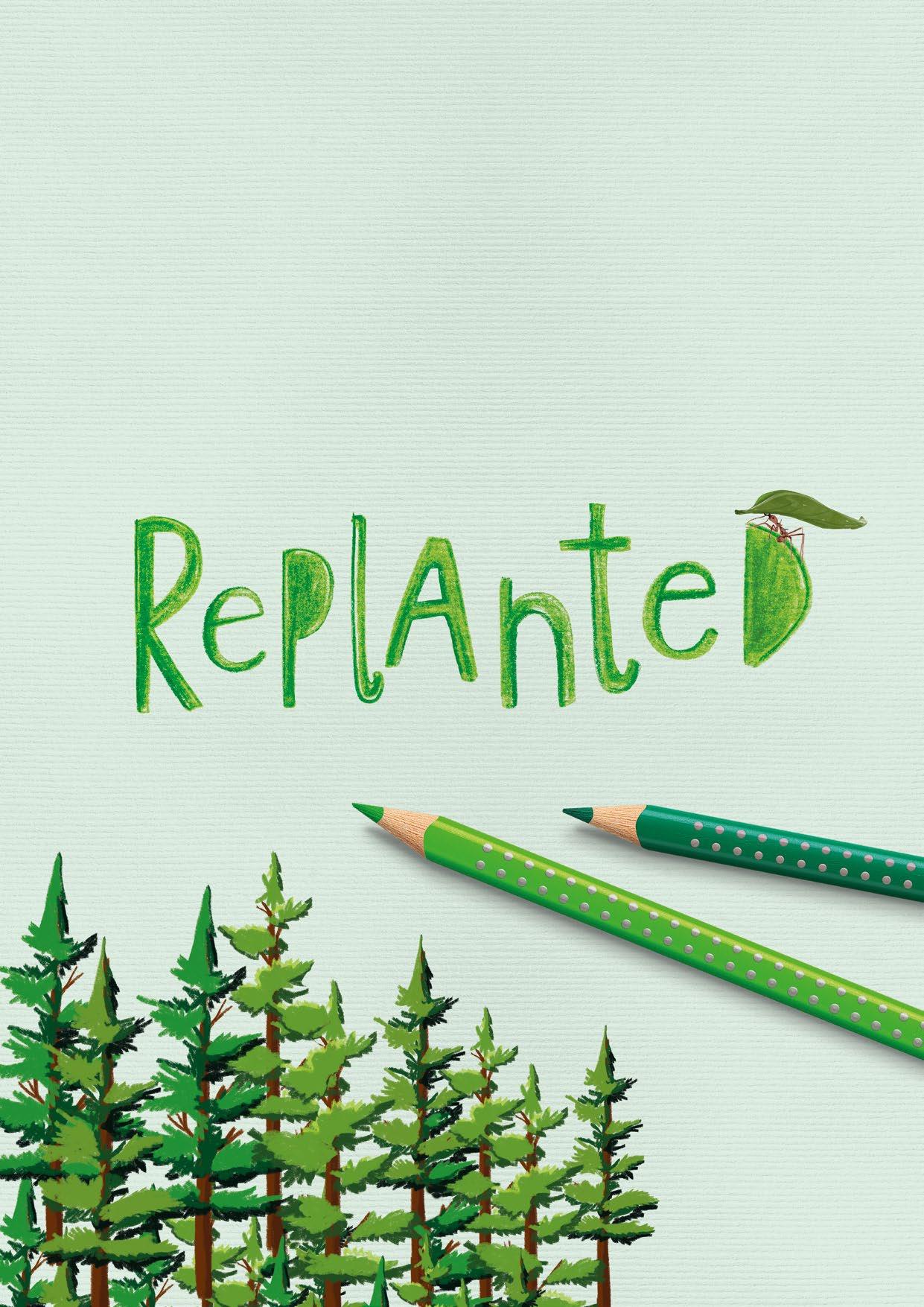



cleared for pencils. Sustainability Report 2022 You
find the
of our
page 12
Forests get
will
explanation
cover picture on
We have just sharpened our view of the future with our new corporate strategy: Where do we want to go? What ambitious goals are we setting ourselves? What significance will creativity have and what role will sustainable management and action play in this?
The symbol for our new strategic orientation "One FaberCastell – creating a colourful future" is the tree. Its roots are the people who make this company thrive. But its roots are also the values that guide us:
- entrepreneurial and responsible
- passionate and tradition-conscious

- quality-conscious and sustainable

- ambitious and innovative
These values guide us in our day-to-day decisions. They unite us as "One Faber-Castell" – as an organisation that works together worldwide. And they have been part of our philosophy as a ninth-generation family business for many years.
We have already achieved a great deal and are aware of the remaining tasks for the future. In our industry, we have been pioneers in the environmentally conscious use of resources: we have been managing our own forests in Brazil since the 1980s. We have been using hydropower to generate electricity in Stein since the 1950s. At other locations, we rely on regenerative energy generation, for example with our own solar plants. We will continue along this path and want to remain a leader in the industry in terms of sustainable and fair business practices. Rarely has this been more important and at the same time more challenging than at present: rising raw material prices, interrupted supply chains and the current energy crisis in Europe present us with major tasks. However, they are also an incentive to further increase our innovation and creativity worldwide. We have set ourselves major goals against which we will be measured by our consumers, trading partners and the public. Will we be able to achieve these goals? The last two years have shown that conditions are often unpredictable. Nevertheless, we firmly believe in our sustainable success and are working
hard to achieve it. With our annual Sustainability Report, we will share this journey into our colourful future with you. Why not accompany and support us in realising our ambitious plans?
Read more about our sustainability goals on pages 40 and 41, and take a look at pages 52 and 53 for information on our milestone victories in reducing our carbon footprint, which fill us with pride and joy.
I wish you an exciting read.
Yours
2
Stefan Leitz Chairman of the Board Faber-Castell AG
Sustainability Report 2022
Our Company
Faber-Castell Group Sites 6
Company Facts and Figures 7
Faber-Castell Cosmetics Business Data 8 Eberhard Faber Business Data 9
Faber-Castell’s Mission Statement 10
Leadership Essentials 11
Three Pillar Model 12 Stakeholder Survey 14 Governance 15
Our Developments
2020/21 Financial Year Energy Consumption 18
2020/21 Financial Year Carbon Emissions 20
Faber-Castell's production is carbon-neutral 24
Forest in Brazil 25
Carbon Neutrality 28
2020/21 Financial Year Environmental Indicators 30 Certification, Seals and Management Systems 32 Social Developments 36
Our Targets and Initiatives
Our Sustainability Targets 40 The United Nations’ Sustainable Development Goals 43 Targets and Initiatives 44
Appendix
Detailed Input Analysis 58
Detailed Output Analysis 60 Detailed Social Indicators 62
The key indicators, data and consumption figures from this Sustainability Report relate to the 2020/21 financial year and to the entire production sites and affiliated distribution sites. In addition, some more recent projects and initiatives up to and including 2021 are also presented.
Detailed information about the company and further information about sustainability can be found on our website:
www.faber-castell.com/corporate/sustainability
Do you have any suggestions, criticism, ideas for improvement or questions about this Sustainability Report or sustainability in general? Then please get in touch: sustainability@faber-castell.com
3
4
5
Our Company
Faber-Castell Group Sites
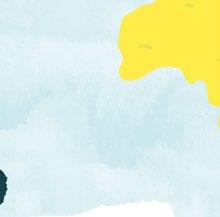

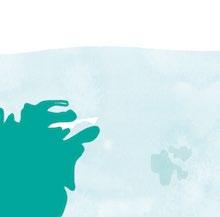
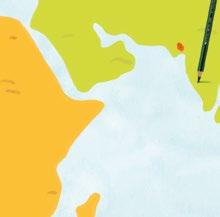
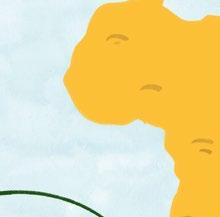

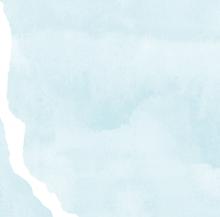

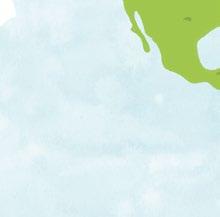
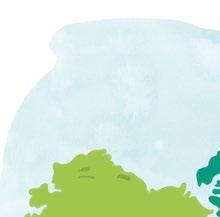
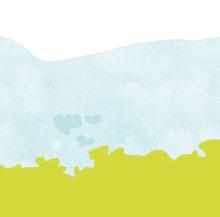
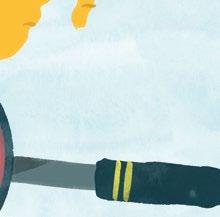

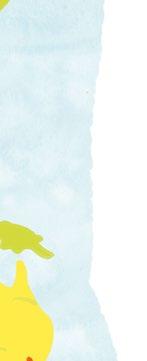

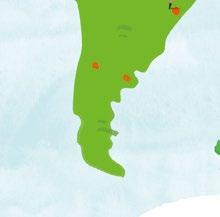
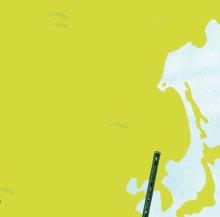

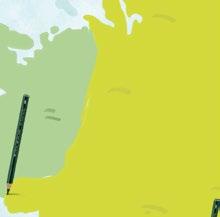
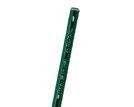




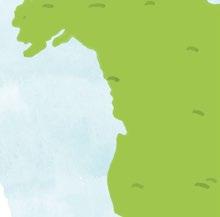
Illinois (USA)

Cleveland (USA)
Copenhagen (DK) Geroldsgrün (D) Stein (D) Paris (F) Engelhartszell (A) Budweis (CZ) Vienna (A) Zurich (CH) Milan (I)
Bogotá (CO)
Lima (PE)
Santiago de Chile (RCH)
Manaus (BR)
Hong Kong
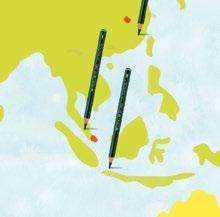
Kuala Lumpur (MAL)
Singapore
Goa (IND) Jakarta/ Bekasi (RI)
Guangzhou (CHN) Mumbai (IND) São Carlos (BR) Sao Paulo (BR) Buenos Aires (RA)
Sydney (AUS) Auckland (NZ)
Sales organisations * Joint venture/partnership Production sites
Prata/Minas Gerais (BR) reforestation zone Our Company 6
Istanbul (TR)*

Stefan Leitz (CEO) Constantin Neubeck
Simon Hauser (CTO)
1761 Sales and marketing regions Europe and North America Asia-Pacific Latin America Production sites in 10 countries Sales organisations in 22 countries Agents in more than 120 countries Employees more than 6,500 in total worldwide Group turnover 2020/21 452 million euros Certificates ISO 9001, ISO 14001 FSC® FM, FSC® CoC PEFC IFS HPC (household and personal care products) Associations UN Global Compact The German Environmental Management Association (B.A.U.M.) The Bavarian Environmental Pact and Climate Pact Association for European Sustainability and Eco-Management (VNU) You can find further information on the economic development of the Faber-Castell Group in the Press section of the www.faber-castell.com and www.bundesanzeiger.de websites. Our Company 7
Faber-Castell Aktiengesellschaft 90546 Stein, Germany Board
(CFO)
Founded
A.W. Faber-Castell Cosmetics GmbH

Nürnberger Straße 2 90546 Stein Germany
President Dagmar Chlosta
Founded 1978
Marketing & Sales Regions
Europe & North America, Latin-America, Middle East, Asia-Pacific 5 production sites in 3 countries (Germany, Brazil, USA) Sales sites in 3 countries (Germany, Brazil, USA)
Employees 652 in all countries (white and blue collar)
Revenue 2020/21 55 million euros
Certificates
Ecovadis 2021 Silver Siegel ISO 14001 (TÜV Rheinland) ISO 9001 (TÜV Rheinland)
IFS-HPC GMP – ISO 22716:2008
PEFC FSC®
Memberships
CosPaTox
Sedex Member
Further information about Faber-Castell Cosmetics can be found at faber-castell-cosmetics.com

Our Company 8


Eberhard Faber Vertrieb GmbH 90546 Stein,
Managing Director Nikolaus Fliegerbauer Founded 1861 Sales and marketing regions Europe Representatives in more than 20 countries Certificates FSC® and PEFC Commitment Scientific Certification Systems for recycled content ClimatePartner Peter Maffay Foundation for disadvantaged children and young people Our Company 9
Germany
Faber-Castell’s Mission Statement





































































































































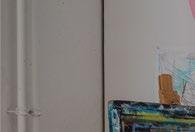























































Society and the market are changing: the retail landscape and channels are shifting while digitalisation is progress ing. This presents opportunities for Faber-Castell, with a longing for haptic experiences is emerging as a coun ter-movement and interest in creative abilities is growing.

In 2018, Faber-Castell created its “Corporate Essentials”, a mission statement building on our core brand values.
It had followed up until then. The new mission statement focuses more on the core ideas of creativity and custom er experience. As a “life companion”, Faber-Castell wants to promote creativity from young to old and inspire its customers to creative experiences with innovative products.
Our Vision Our Values Our Mission
10 Our Company
Leadership Essentials
The Leadership Essentials set out five core characteristics of a good Faber-Castell leader. Each of these core characteristics was presented with three guiding principles plus various examples in order to help all leaders to put these traits into practice in daily work life.

Take responsibility, as if it were my own company and money.
Able to inspire and motivate, as well as knowing the way and showing what is possible.
The ability and willpower to withstand difficult situations and overcome them quickly.




To see myself as a leadership role model. Believe in the further development of people and promote their personal growth.

Our Company 11

























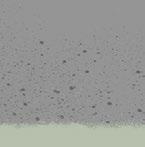

















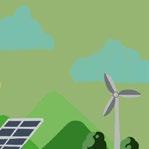













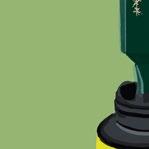
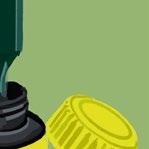


























10,000 hectares of our own forests in Brazil 87 percent renewable energy sources Many products are refillable Each year we plant around 300,000 seedlings One truck load of wood grows every hour 100% FSC®- or PEFC-certified woods are used in production worldwide Reducing plastics and/or replacing them with recycled materials 900,000 tonnes of CO2 absorbed by our forests Ecological Sustainability is anchored in our Corporate A third of the forest area is dedicated to native environment preservation and a habitat for more than 716 native animals 12 Our Company














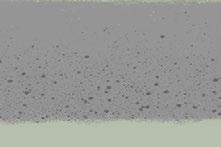
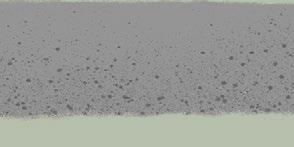











































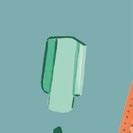


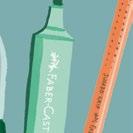




















Honourable Business person
Represented in 120 countries Production facilities in 10 countries Sales companies in 22 countries Improvement of +10% in the ESG Rating in 2021 with a total of 66 points achieved More than 6,500 employees worldwide Writing, drawing and creative design and decorativecosmetic products Around two billion graphite and colour pencils per year (laid end to end, this would create a line that would go around the Equator 10 times) Global Social Charter Unleashing creative skills Corporate Essentials
Economic 13 Our Company
Graf von Faber-Castell Children’s Fund Foundation
Social
Stakeholder Survey Materiality analysis

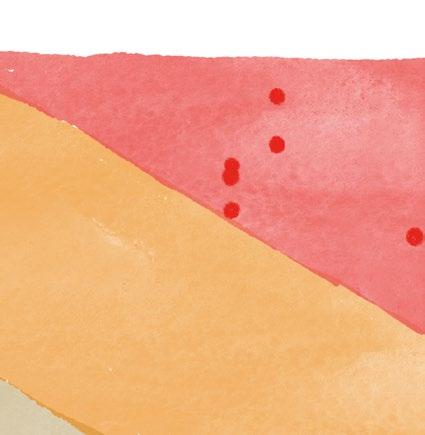


Faber-Castell has been carrying out a stakeholder survey every two years since 2016. While it may initially have been a small circle of less than 300 participants, 2020 1,200 stakeholders were surveyed about our sustainability work so far and about future focal points. The stakeholders were made up of customers, suppliers, employees, external authorities and investors. More focus is to be placed on environmental agencies and NGOs and more attention paid to a more balanced weighting of the stakeholders from the various countries in order to make the next survey, planned for late 2022, more informative.
The stakeholder survey was a key basis for the implementation of a materiality analysis, so that Faber-Castell can do the right thing in the right areas in future. The materiality analysis primarily aimed to refine Faber-Castell's strategy in a sustainable direction and to derive goals to improve our sustainability achievements. In addition, it was intended to identify focal points for sustainability report creation and communication, recognise any
need for action at an early stage along the supply chain and meet the targets of external certification schemes. The stakeholders’ answers were contrasted with the estimation of relevance for Faber-Castell from a global and functional perspective. Product quality, human rights, worker health and safety, environmental influences (of both products and processes), compliance and economic development were identified as very important areas for action. In the analysis of which areas already have associated activities and measures, the gaps were identified and goals derived for this.
Very high: very important topic. Measures must be set out immediately.
High: important topic. Measures to be defined as soon as initiatives from the “very important” grouping have been introduced.
Moderate: Points currently of less concern. Will be monitored going forward.
Low Relevance for Faber-Castell High Low Stakeholder expectations High Employer of choice Stakeholder dialogue Employee diversity and equal opportunities Transparency in the supply chain
Worker
and safety
Compliance Financial trends Moderate High Very high
Product quality Human rights
health
Environmental influences (products and processes)
Our Company 14
Governance
Faber-Castell identified major fields in sustainability based on the materiality analysis. Group-wide, quantitative sustainability targets were also adopted (see page 40 and 41).
Faber-Castell has corporate policies on all aspects relevant to sustainability. Our compliance management was evaluated as very good in the ESG Rating. This implements the extensive provisions of the Faber-Castell Charter. The compliance provisions are monitored through on-site audits.
Compliance
Faber-Castell's corporate success has always been based on the trusting and fair treatment of employ ees, business partners, customers and suppliers. Corresponding measures of value are already em bedded in our company’s long tradition, but are also enshrined in the Corporate Essentials. Central rules must apply within the company that promote a trusting and respectful way of dealing with each other in order to give our employees orientation and security.
The Faber-Castell Charter (Code of Conduct) summarises the key company positions and basic rules. Compliance with these rules is also essential for successful and sustainable business in the future. The Charter also sets out specific behaviours that are mandatory for all Faber-Castell Group employees (summarised in the Charter’s text as “Faber-Castell”). The key contents have been modelled at Faber-Castell for generations.
Topic's relevant for compliance are addressed in the Faber-Castell Charter. Compliance officers ensure the Faber-Castell Charter guidelines are followed and the management is kept up to date. Violations can be reported anonymously. Comprehensive training is provided on compliance issues. Internal audits monitor compliance with Charter guidelines. One aspect that has either not been addressed or not been addressed sufficiently is tax compliance, which is not explicitly regulated in the Faber-Castell Charter. However, the company is currently working on introducing a tax compliance system that is intended to be present in every company in the future.
Corruption
Key aspects, such as the prohibition of accepting or paying bribes, rules on gift acceptance and the payment of kickbacks, are regulated in the Faber-Castell Charter and in specific anti-corruption and gifting guidelines. Faber-Castell communicates its corruption prevention guidelines to both its employ ees and its business partners. Due diligence reviews are carried out for certain industries prior to initiating business relationships. The Chief Compliance Officer (CCO) is responsible for anti-corruption. On-site audits are carried out as part of the Group-wide compliance audit, which includes areas such as the Faber-Castell Charter, ombudsman, and cartel and anti-corruption guidelines. Basic training on corruption is given to all employees, plus special training for relevant employees, for example, in purchasing.
Our Company 15
16
Our Developments
17
2020/21 Financial Year Energy Consumption


Production sites’ energy consumption
Our Developments
The Faber-Castell Group reports the key environmental and social data from every completed business year. Since this data comes from the last complete financial year, the process of data collection is the period in question here. As a result, the process of data collection, validation and publication is somewhat delayed. The outcomes and explanations of the changes are shown in the input-output analysis in the Appendix and include the 2020/21 financial year in comparison with the previous three years. The data is collected for each country and aggregated as a group figure.
Scope 2
Externally sourced energy: Purchased energy
Scope 1
Direct, internally sourced energy
Scope 1 Energy

Internally sourced renewable energy Faber-Castell generated 90 per cent of its process energy in the 2020/21 financial year on the basis of renewable energy sources. The energy comes from the energy recovery of industrial waste wood from board and pencil production in the wood-processing plants. In addition, hydropower from the neighbouring river is used to generate electricity at the Stein site. In 2021, solar panels were installed in India and Malaysia. The impact of the Indian solar panels on the ratio of renewable to non-renewable energy will be evident in the next two years of data. Malaysia was already able to produce 295,880 kWh of solar energy by the end of the 2021 financial year.
Internally

sourced non-renewable energy
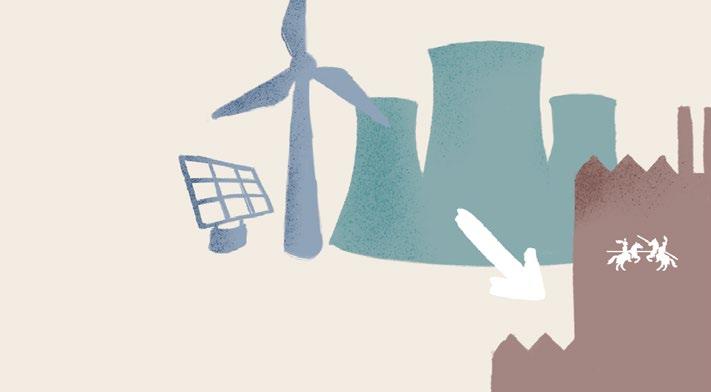
The total amount of self-produced non-renewable energy increased by nine per cent in the 2020/21 financial year. The reason for this is that the consumption of natural gas increased by 19 per cent, as the cosmetics location USA was included in the data analysis for the first time and Germany also had a slightly increased demand for natural gas. Without the production location USA, there would have been an overall increase in self-produced non-renewable energies of three per cent.
Unit MWh 2017/18 FY 2018/19 FY 2019/20 FY 2020/21 FY Δ 19/2020/21
Scope 1 non-renewable 13,673 12,859 12,485 13,613 +9%

Our Developments 18
Environmentally friendly hydropower at the Stein site
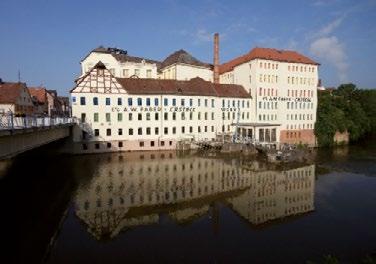
A Kaplan turbine has been generating electricity from hydropower at the Stein site since 1956. In 2014, the turbine was completely overhauled and a new generator and gearbox were installed. Using an electrical sensor, the turbine’s adjustable guide vanes and rotor blades automatically adjust to the water level of the Rednitz river. Up to 12,000 litres of water pass through the turbine every second. Its output ranges between 50 and 280 kW depending on the water level. This means up to two million kWh of electricity can be generated per year. For the Stein production site, 4,087 MWh were purchased in the 2020/21 financial year, and 2,002 MWh were generated by the hydropower turbine.
Scope 2 Energy
Purchased renewable and non-renewable


energy
Overall, the company covered 27 per cent of its global energy consumption through purchased energy in the 2020/21 financial year. Of this, 79 per cent comes from renewable sources; this share increased significantly last year and was 74 per cent in the previous year. Overall, the demand for electricity has decreased by 17 per cent, which is roughly in line with the 20 per cent decrease in the output volume produced. The plants in Brazil, Peru, Austria and Germany already cover 100 per cent of their electricity needs from renewable resources.
Total internally sourced and purchased energy at the Faber-Castell Group
The measures we have introduced to be able to switch to environmentally-friendly energy supply are now paying off: the Faber-Castell factories across the Group are now using 87 per cent thermal and electric energy from regenerative sources, which is an increase in comparison to the previous year (85 per cent renewable and 15 per cent non-renewable).
view of the pencil factory in
power
in the
13% Nonrenewable 87% Renewable 21% Nonrenewable 79% Renewable Our Developments 19
Exterior
Stein, hydroelectric
plant
Rednitz river
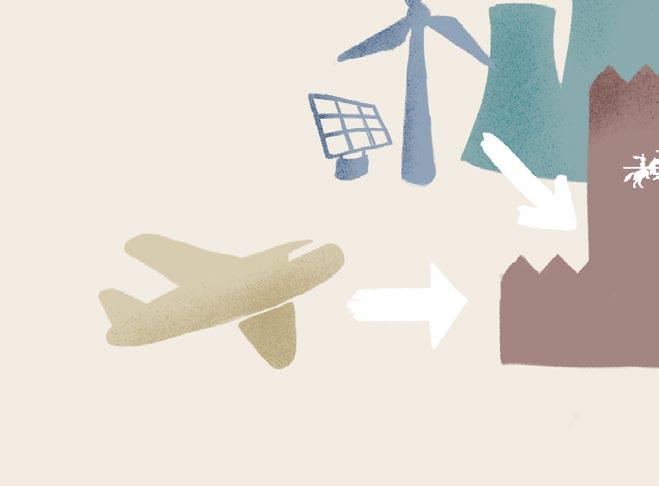
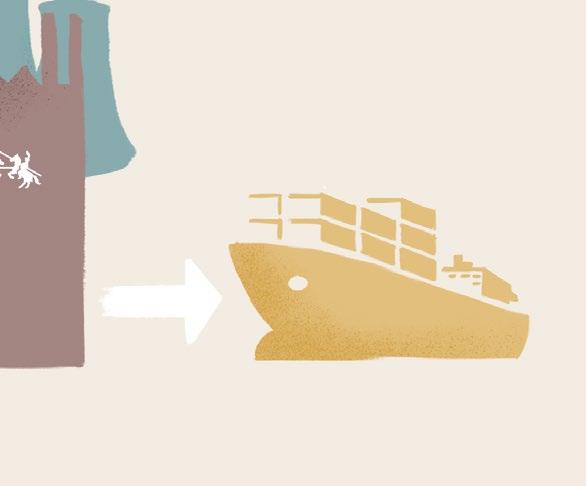
Scope 1 Direct internal emissions Scope 2 External emissions: Purchased energy Scope 3 External emissions: Business travel Scope 3 External emissions: Goods transport Own forests Sustainability communication Corporate Carbon Footprint (CCF) Reduction of emissions Product Carbon Footprint (PCF) Year Mid 1980s 2009 2014 2017 2020
Financial Year Carbon Emissions Production site emissions 20 Our Developments
The carbon emissions from all Faber-Castell production sites and the transport-related emissions for people and goods have been systematically recorded as per ISO 14064-1 and the GHG Protocol since 2013. This systematic recording of data formed the basis for a wholistic carbon reduction strategy for Faber-Castell. By analysing our company’s carbon footprint, we have been able to derive and implement measures aimed at reducing emissions.
2020/21
Scope 1 Emissions
Internal emissions
Scope 1 represents all emissions created by the company, including emissions from production processes, emissions from transport vehicles such as forklifts, and the emissions resulting from the company's energy production efforts. Scope 1 emissions increased by 16 per cent in the 2020/21 financial year compared to the previous year for the first time in four years, after a reduction of 11 per cent was achieved in the previous year. The reasons for this are a higher demand for natural gas due to the cosmetics plant in the USA newly included in the reporting and an increased demand for acetylenes. Scope 1 emissions account for 19 per cent of total emissions.
CO2 emissions (t CO2e)
2017/18 FY 2018/19 FY 2019/20 FY 2020/21 FY Δ 19/2020/21
Scope 1 t CO2e 6,050 4,906 4,372 5,060 +16%
Scope 2 Emissions
Emissions from energy purchased from external service providers
Scope 2 includes emissions produced by external service providers through the generation of the energy we purchase. Emissions decreased by 28 per cent as Germany purchased 100 per cent electricity from renewable sources in the 2020/21 financial year. In addition, the total demand for purchased electricity decreased by 17 per cent, as some locations produced less due to the COVID-19 pandemic. A further reduction in emissions is also expected in the following financial year, as Malaysia has also switched its electricity purchasing to renewable energies.
CO2 emissions (t CO2e)
2017/18 FY 2018/19 FY 2019/20 FY 2020/21 FY Δ 19/2020/21
Scope 2 t CO2e 27,742 27,554 20,843 14,940 -28%
Scope 3 Emissions
External emissions
Scope 3 covers emissions that can only be indirectly attributed to the company. Here, Faber-Castell integrates the upstream and downstream corporate processes, business travel and goods transit throughout the company. The latter remains the main factor within Scope 3. External emissions fell both in the previous financial year (-35 per cent) and in the 2020/21 financial year by a further 36 per cent. This is mainly an effect of the COVID-19 pandemic, as virtually no business travel took place and the tonne-kilometres shipped also fell by 12 per cent, resulting in fewer emissions.


CO2 emissions (t CO2e)
2017/18 FY 2018/19 FY 2019/20 FY 2020/21 FY Δ 19/2020/21
Scope 3 t CO2e 13,663 15,234 9,871 6,312 -36%
Our Developments 21
Carbon Emissions 2020/21 Financial Year
Total Faber-Castell Group Emissions
In the 2010/21 financial year, the Faber-Castell production sites reduced their carbon emissions by 8,773 tonnes in comparison to the previous year (-25%). This is roughly equivalent to the carbon emissions of an average car with more than 50 million kilometres on the clock. Emissions were reduced by 5 per cent in regards to the number of globally produced products. Per million items produced, emissions fell from 10.3 to 9.8 tonnes – a successful development that is mainly due to the further increase in the share of electricity from renewable sources. The highest share of CO2 emissions is attributable to the largest Faber-Castell Group sites: Brazil (33 per cent), followed by Indonesia (20 per cent). Indirect energy consumption, i.e. purchased energy and goods transport have the greatest influence on total emissions at 57 per cent and 23 per cent respectively.
4% Internally sourced renewable energy Production process 4% 57% Purchased energy Goods transport 23% Internally sourced non-renewable energy 12% Business travel 1%
Production site emissions Our Developments 22
Challenges
The greatest potential for improvements in the company’s input analysis lies in the purchased energy and the materials used. Faber-Castell has plans to continuously increase the proportion of raw materials from recycled sources in order to improve sustainability when it comes to plastics. The company plans to either avoid plastic packaging or replace it with cardboard. Purchased electricity, where possible and available, should come from renewable sources despite the additional costs. Our energy contracts, some of which have long terms, only allow for a gradual changeover. Reducing greenhouse gas emissions is essential to curbing climate change. Faber-Castell is committed to continuously reducing carbon emissions. In order to be able to make corporate decisions on environment-related actions, it is essential to have a full record of all greenhouse gas emissions.
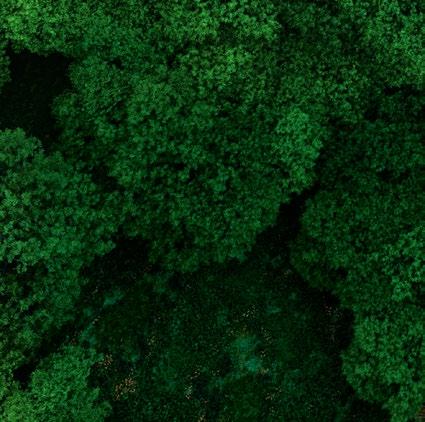

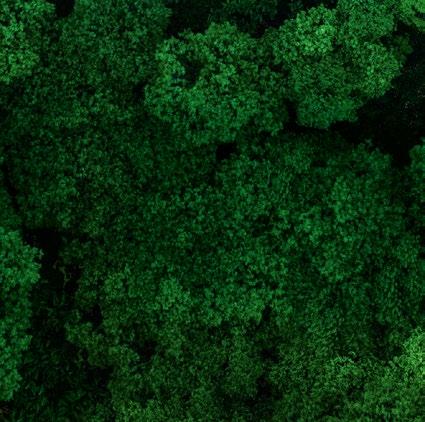
However, the further you set the system limits, the less reliably the data can be determined and influenced by Faber-Castell. Faber-Castell has therefore decided to keep the system limits close and to record not only all direct and indirect emissions from Scopes 1 and 2, but also the movement of goods within the Group and all business travel. With regard to the movement of goods, it should be noted that the choice of transport method (air vs. land freight) is often made by the customer and Faber-Castell cannot always influence this.
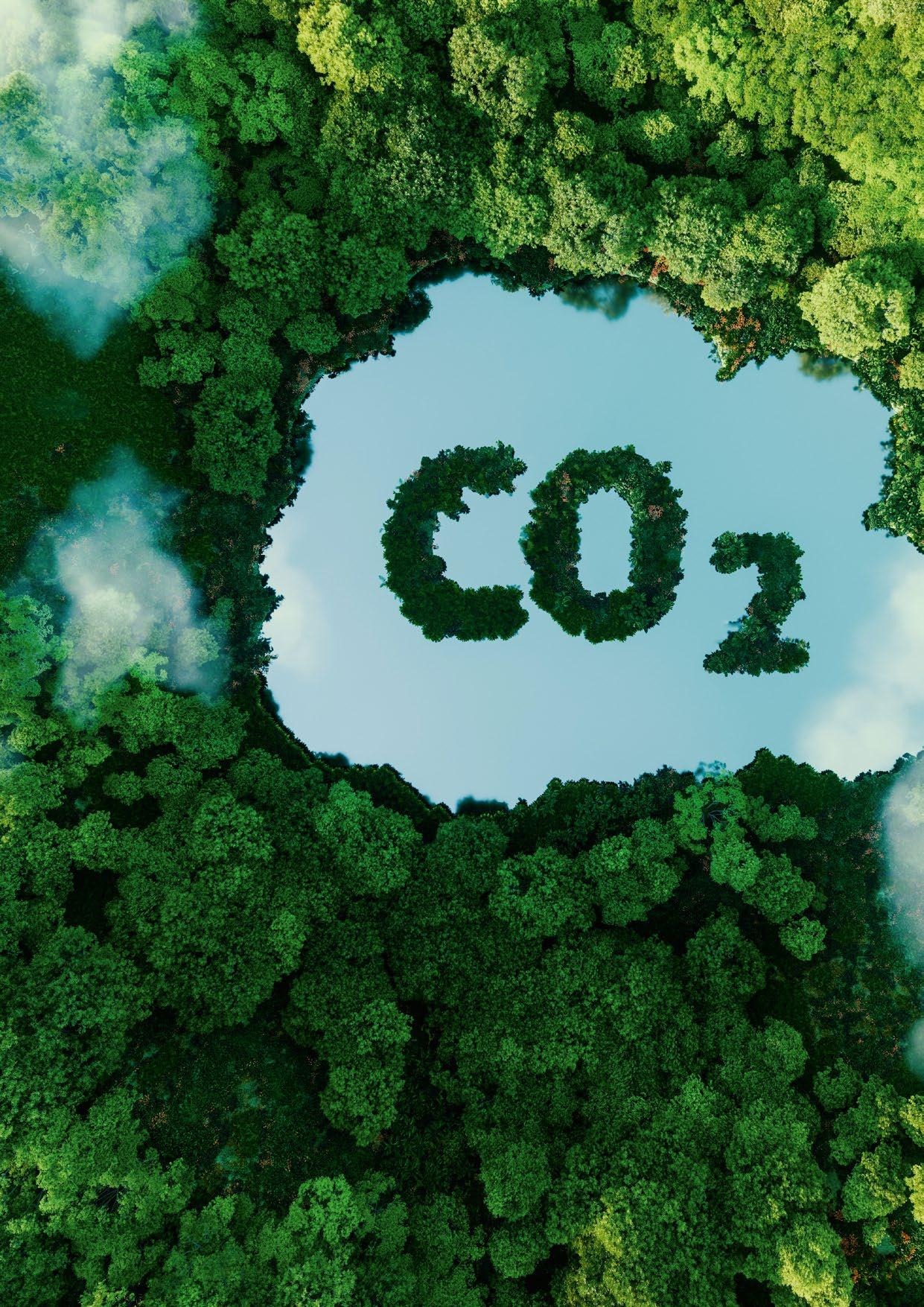
Our Developments 23
Faber-Castell’s own forests in Prata, south-east Brazil, capture 900,000 tonnes of carbon dioxide (CO2). This was confirmed by TÜV Rheinland® in 2012. The 10,000 hectares of forests therefore not only secure our sustainable wood needs, but also help decrease the burden on the atmosphere through photosynthesis, in which CO2 is converted into biomass. This means that the pine trees and the natural forests in Prata neutralise the climate-relevant carbon footprint of Faber-Castell production sites around the world. One third of the forest area remains native preserve. In addition to conserving resources, respect for the environment also plays a key role for Faber-Castell.















24 Our Developments
Protecting biodiversity








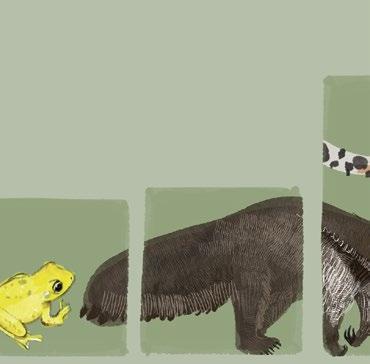

Faber-Castell makes an excellent contribution to the preservation of the Brazilian Cerrado, an ecosystem present in our parks and one of the most threatened ecosystems in Brazil and in the world. One third of the area of Faber-Castell's forests in Brazil is dedicated to preserving the native environment. These preservation areas have become biotopes for rare animal and plant species, and are now home to more than 716 species, such as the macaw, the maned wolf, the porcupine, or the white-eared puffbird. Of these, 50 species face extinction elsewhere. There are currently four preservation projects underway, which have garnered both national and international recognition and awards.
In 2001, two biodiversity programs were launched: were launched called Animalis and Arboris. The goal of these long-term biodiversity initiatives in the company’s forests in Prata (Minas Gerais, Brazil) is to preserve and establish the native fauna and flora. Scientists regularly monitor the variety of animal and plant species, and their distribution and colonization are documented. Since the beginning of the program, a constant increase in biodiversity has been recorded in the approximately 10,000 hectares forest area.
Furthermore, a project called Aqua monitors the water quality and water levels in the forests of Faber-Castell which is essential to detect at an early-stage possible contamination of neighboring areas of cultivation or drought periods and allows appropriate measures to be taken. The results:
› Due to the preservation of the riparian forest, it is possible to see that the streams running through the company's areas is greater than in other agricultural lands in the region.
› Awareness-raising activities for rural communities and implementation of environmental projects in neighboring areas.

Another project called Soils has the objective to characterise and map the soil throughout the company's forest parks to optimise its use, monitor its evolution and take measures to minimise erosion.

1992 172 2001 187 2006 318 2011 508 2016 621 2020 716
25 Our Developments
Sunlight
Carbon dioxide








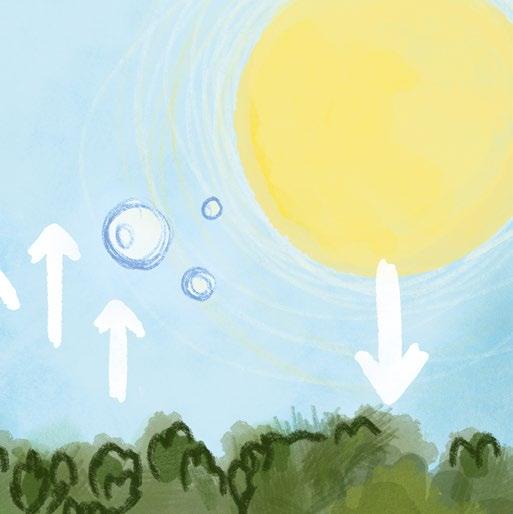
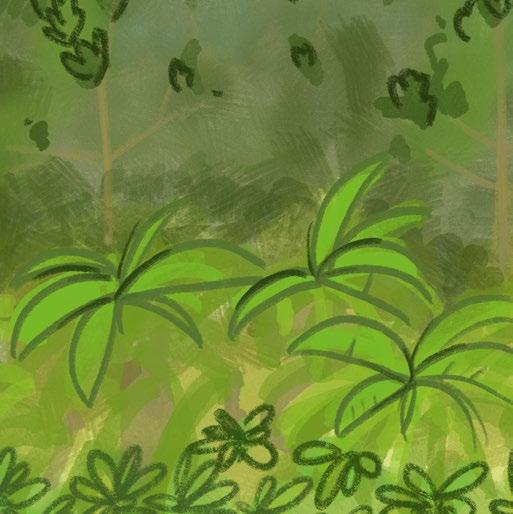



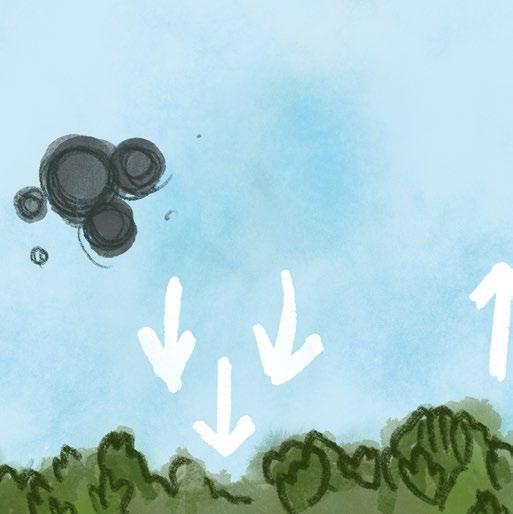
Oxygen
Mammal species



Reptile species
Bird species
Fish Water
26
species
Amphibian species



Certified forests

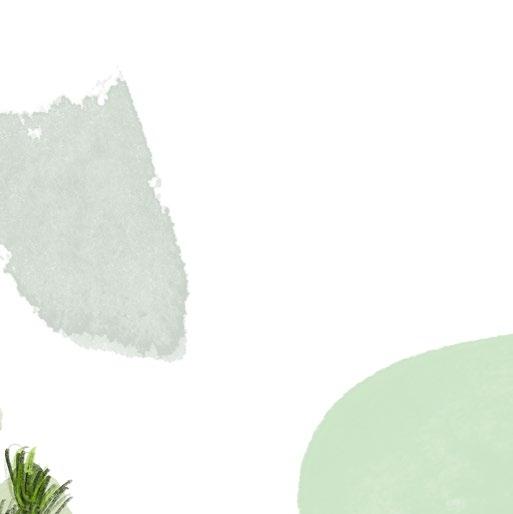
Tree species:


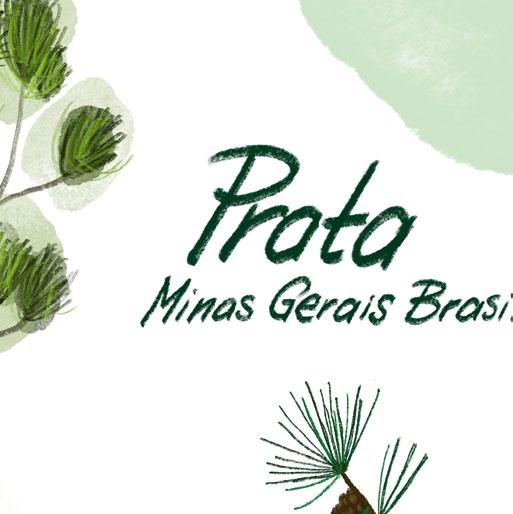


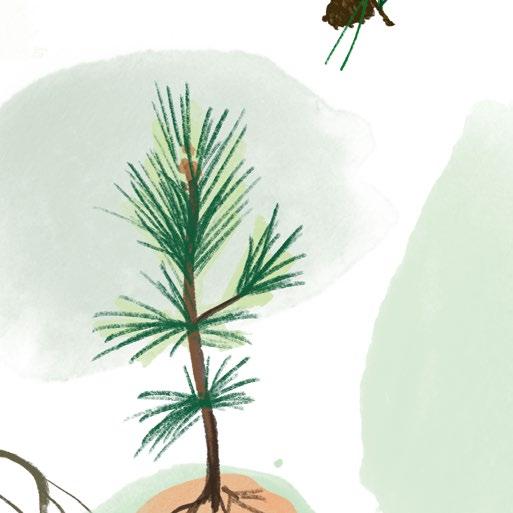
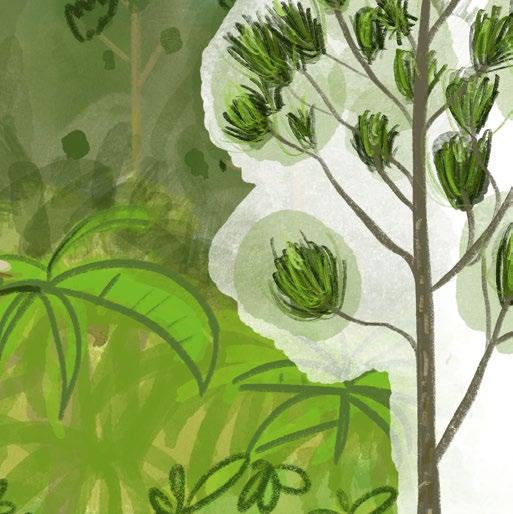
10,000 hectares of forest 2/3 are pine forest 10,000 hectares of forest 1/3 of the forest is native
86% of our global wood needs comes from our own forests
Ant species
Pinus Caribaea (pine) 900,000 tonnes of CO2 are absorbed 300,000 seedlings annually 20-23 years to harvest 40,000 native trees planted 467 native tree species from 29 different tree families
27
Carbon Neutrality
Carbon neutrality means keeping a balance between emitting carbon and absorbing it from the atmosphere. Carbon-neutral production means that the CO2 emissions caused by Faber-Cas tell's own production sites worldwide are neutralised by the com pany's forests in Brazil. When talking about carbon-neutral products, the CO2 emissions of the input material, transport and production of one product line are considered in the calculation. Meanwhile there are different external partners to work with for the certification of carbon-neutral products. These partners cal culate the amount of CO2 that is emitted for a particular product line and provide information of the offset-projects that can be chosen.
Input material
Transport
Carbon-neutral production
According to a study by TÜV Rheinland®, the company’s own forests absorb more than 900,000 tonnes of CO2 from the atmosphere. They simultaneously neutralise the CO2 emissions of Faber-Castell’s production sites throughout the world.

28 Our Developments
Usage
Carbon-neutral product
The emissions caused during the material sourcing process, during production, and from the transport to production, are all calculated and offset through the support of corresponding projects. The ClimatePartner label certifies the offsetting of the remaining greenhouse gas emissions for the respective products.



Transport 29 Our Developments
Environmental Indicators 2020/21
Financial Year
In order to assess the environmental impact of material and energy consumption independently of changes in production and demand, such consumption is linked to the production of one million products.
Waste water
(m3/million products)
As Brazil implemented a new water reuse system in 2019/20 and mine production in Germany was switched to a less water-intensive manufacturing process, waste water intensity was reduced by 23 per cent. In the 2020/21 finan cial year, waste water intensity decreased by a further five per cent.
Waste
(tonnes/million products)
The amount of waste per million products increased by 43 per cent. This increase is due to the production plant in the USA, as this was included in the 2020/21 financial year. Without the cosmetics plant, waste intensity would be 1.51 – an increase of eight per cent.
0,0 0,5 1,0 1,5 2,0 FY
FY
1,66 1,37 1,39 1,99
0 10 20 30 40 50 FY 2020/21 FY 2017/18 FY 2018/19 FY 2019/20 49,0 45,0 35,0 33,4 -5%
2017/18
2018/19 FY 2019/20 FY 2020/21
+43%
30 Our Developments
Energy used
(Scope 1 + Scope 2; MWh/million products)
The energy used per million products produced increased by 30 per cent from 52.6 to 68.3. Despite the lower production utilisation, the specific energy consumption increased because the base load of electricity consumption of the production machines was high. In part, COVID-19 protection measures, such as staggered employee break times, also led to machines running longer.
CO2 emissions
(tonnes/million products)
CO2 emissions per million products fell slightly by five per cent. In addition to lower electricity requirements, this was mainly due to the fact that the share of purchased renewable energies within the Group was further increased, reducing the emissions burden in Scope 2 by 28 per cent. However, lower air freight, which can be directly attributed to Faber-Castell, and less business travel also contributed to the reduction.
Plastic packaging
(tonnes/million products)
The proportion of plastic packaging per million products has increased minimally by 2 per cent. The measures initiated to date to reduce plastic packaging will presumably be reflected in the next few years.


0 10 20 30 40 50 60 70 80 FY 2017/18 FY 2018/19 FY 2019/20 FY 2020/21 57,7 56,1 52,6 68,3 +30% 0 3 6 9 12 15 FY 2017/18 FY 2018/19 FY 2019/20 FY 2020/21 13,0 13,6 10,3 9,77 -5% 0,0 0,1 0,2 0,3 0,4 0,5 0,6 FY 2017/18 FY 2018/19 FY 2019/20 FY 2020/21 0,58 0,59 0,53 0,54 +2% 31 Our Developments
Carbon neutral production
We contribute to climate protection through the annual calculation and management of our carbon footprint at all production sites. The emissions are neutralised through the sequestration of carbon in our forests in Brazil.
Carbon-neutral production
The CO2 emissions generated by manufacturing this product are offset by our forest in Brazil.
ClimatePartner
Climate-neutral products whose greenhouse gas emissions are calculated and compensated for through the support of internationally recognised climate protection projects.






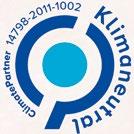

ISO 9001 / ISO 14001

Carbon-neutral product

All carbon emissions incurred in materials extraction, the production process and the transport to the production sites were compensated for through certified projects.


All production sites in the Faber-Castell Group are certified according to the international norms to ensure that quality and environmental protection standards are met.





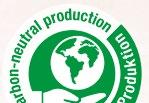

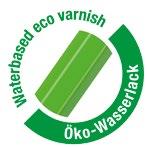
FSC®
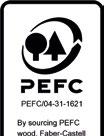
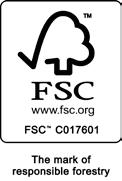
More than 90% of the wood used for the worldwide production of Faber-Castell pencils come from 100% FSC®-certified forests, and thus originate from sustainable sources.
Eco Pencil
Timber from certified sustainable forestry (e.g. FSC®, PEFC, SFI).
PEFC
Faber-Castell also uses PEFC-certified wood alongside FSC®-certified wood. Through a combination of the two certification schemes, Faber-Castell can ensure the wood products are purchased exclusively from sustainable sources.
Water-based varnish
Faber-Castell was the first manufacturer to introduce the environmentally-friendly water-based varnish technology, which is used for almost all writing instruments produced at the main factory in Stein.
Climate Wood 32 Our Developments
Certification, Seals and Management Systems





Refillable
Every product contains valuable raw materials. To extend their lifetime, many products can be refilled.
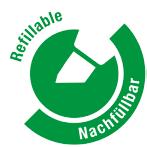
PVC-free
As a world leader in the production of erasers, Faber-Castell avoids the use of harmful softeners. Our erasers are produced under strict quality control and are PVC-free.
Recycled plastic / recycled cardboard
Faber-Castell works on reducing plastics or replacing them with recycled materials, so that products and packaging are made of recycled plastic or cardboard.
boardpackaging

Recyclablecardbo
Ecovadis
A signal to customers that we take our responsibility seriously in terms of environment, labour and human rights, ethics and sustainable procurement in the manufacture of cosmetic products.
Sedex
Recyclable cardboard


Our packaging is made of recyclable cardboard.










IFS


An international standard certification to evaluate the conformity of household and body care products and their processes in terms of safety and quality.
Recycling

A social audit focussing on safe, ethical and sustainable business Sedex is one of the world's leading organizations promoting compliance and improvement of safe, ethical and sustainable business practices while safeguarding the working conditions of workers within the supply chain.
CosPaTox
The industry consortium CosPaTox stands for Cosmetics, Packaging and Toxicology. The aim is to develop specific safety standards for high-value post-consumer The aim is to achieve specific safety standards for highquality post-consumer plastic recyclates (PCRs) for cosmetics and other household packaging, as well as the implementation of on-site measurement methods for recycling companies.
ISO 22716
ISO 22716 is an international standard for good manufacturing practice (GMP) in the cosmetics industry. This guideline provides structured, practical guidance for dealing with hygiene, product safety and their traceable technical and management factors that impact product quality.
a r d C a r d
33 Our Developments
Cosmetics
o a dr Recycledplas t i c
Recycledcardb
By implementing different types of certification and establishing management systems, Faber-Castell ensures that quality, sustainability and social standards are maintained at a global level. The initial certification for ISO 9001 (Quality Management) and ISO 14001 (Environmental Management) began in 1997 and was completed in 2011 for all production sites. All sites are audited and certified according to the revised standard from 2015. The Faber-Castell Cosmetics plant in Elgin, USA, which opened in March 2019, received ISO certification in May 2019.
worldwide. For more information on the Social Charter, please see the “Social Developments” section, p. 36.

Faber-Castell continuously trains employees as internal auditors in order to ensure that all specifications are observed or implemented worldwide. They regularly audit business processes according to standards.
The integrated management system FABIQUS (FaberCastell integrated management system for quality, environment and social affairs), introduced globally in 1998, was modernised and optimised in Germany in 2016 by the addition of a CAQ1 system, to manage standardised documents and implemented processes in an optimal way. “FABIQUS 2.0” has so far been implemented in Germany, Austria, Switzerland and the USA. 1
All production sites producing wood-cased pencils are certified to FSC® or PEFC standards. For sites which do not produce wood products, these two certification schemes are not relevant. All 22 sales companies are certified according to FSC® Chain of Custody standard. This means that every product can be traced from raw material, through all production steps, to the finished pencil in stock. Moreover, the Faber-Castell Social Charter and the associated compliance with social and labour standards apply to all production and sales sites
34 Our Developments
Computer-aided quality
Country, plant
ISO 9001 ISO 14001
FSC® PEFC Social Charter
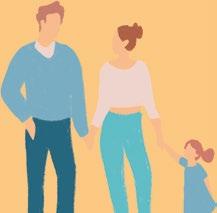




Brazil, São Carlos Yes Yes Yes N/A Yes Brazil, Prata (Plantation) Yes Yes Yes N/A Yes Brazil, Manaus Yes Yes N/A N/A Yes China, Guangzhou Yes Yes Yes Yes Yes Colombia, Bogotá Yes Yes Yes Yes Yes India, Goa Yes Yes N/A N/A Yes Indonesia, Bekasi (FCI) Yes Yes Yes Yes Yes Indonesia, Bekasi (FCII) Yes Yes Yes Yes Yes Indonesia, Bekasi (PLI) Yes Yes N/A N/A Yes Malaysia, Selangor Yes Yes Yes Yes Yes Peru, Lima Yes Yes N/A N/A Yes Austria, Engelhartszell Yes Yes N/A N/A Yes Germany, Stein* Yes Yes Yes Yes Yes Germany, Geroldsgrün Yes Yes N/A N/A Yes USA, Elgin Yes Yes N/A N/A Yes
*including the logistics centre in Frauenaurach, Germany, and České Budějovice, Czech Republic
Challenges:
As a company with an international presence, Faber-Castell is faced with the challenge of meeting differing national legal requirements, complying with different standards, coordinating business processes and strategies and, in spite of this, meeting the various customer and market demands and maintaining competitiveness. Uniform global certifications allow Faber-Castell to standardise and optimise international processes and as a result make better use of competencies and resources.
Note: “N/A” = “not applicable”, which is the case for wood-related certification at non-wood production sites.
35 Our Developments
Social Developments
Social Charter
In March 2000, Faber-Castell and trade union IG Metall signed the Faber-Castell Social Charter. This internationally valid agreement is one of the first of its kind in terms of its scope. It sets out Faber-Castell’s voluntary commitment to ensure, throughout the group of companies, the employment and working conditions recommended by the International Labour Organization (ILO). The Faber-Castell Social Charter includes, among other things, the prohibition of child labour, equal opportunities and equal treatment irrespective of race, religion, gender or nationality and the guarantee of safe and hygienic working conditions. An independent committee monitors the implementation of the agreement at regular intervals. To this end, two sites are audited every year.

Unfortunately, due to the COVID-19 pandemic and the resulting contact restrictions, the audits could not be carried out on site at the locations as planned. In autumn 2022, the audit cycle is to be resumed with Peru. As one of the oldest industrial companies in the world, FaberCastell has always shown a high level of social commitment. As far back as the mid-19th century it set up various social schemes for its employees and their relatives, including one of the first company health insurance schemes and one of the first nurseries in Germany; it also founded schools and built housing for the factory workers.
How we act fairly and correctly: The new Faber-Castell Charter
Faber-Castell's corporate success is based on the trusting and fair treatment of employees, business partners, customers and suppliers. These values have not only been practised in the company for many generations, they are also the principles of the “Honourable Businessman”, a model dating back to the Middle Ages, which is still relevant centuries later. The Honourable Businessman is committed to adhering to values and rules, but also creates the conditions for honourable action and assumes responsibility for his (or her) deeds. As part of the Compliance Management System (“CMS”), a Code of Conduct was drawn up in cooperation between the Faber-Castell family, the Supervisory Board, the Executive Board and the
Compliance Committee: the Faber-Castell Charter. It lists 15 points that help every employee to act fairly and transparently – in line with our corporate values. “The binding Code of Conduct is intended to give employees throughout the company guidance and security,” says Thomas Wagner, Head of Compliance. An independent lawyer also provides support as an ombudsman, whom employees can contact anonymously. The Code of Conduct sets out what has been part of our philosophy for centuries: fairness, transparency and respect. Only in this way can we maintain the high brand confidence among our customers and ensure the profitable growth of the company – in the spirit of an Honourable Businessman.
36 Our Developments
58% male
Social Indicators in the 2020/21 Financial Year

Employees
68 per cent of employees work in (extended) production, 32 per cent in administration and management. The proportion of female employees worldwide has remained constant over the years at 42 per cent. At Faber-Castell, 142 employees live with a disability, which corresponds to 2.1 per cent of the global workforce (previous year: 119 employees or 1.7 per cent). The proportion of women in management positions who are themselves on the management board or report to the management board was 30 per cent in the 2020/21 financial year (previous year: 34 per cent, but these figures did not include the European production sites) and is to be increased to 50 per cent in the long term (see page 40).

Work-related accidents

The number of reported occupational accidents –including accidents on the way to work – has decreased by 25 per cent compared to 2019/20, from 75 to 56 accidents. The lower number of commuting accidents due to people working at home more led to the sharply reduced number.
Employee training and development
In addition to the legally required training courses, such as on occupational safety, the company also offers language and IT courses as well as intercultural workshops. The Faber-Castell vision of “We unleash creative potential" was also used to support creative activities and workshops for employees in pre-Covid-19 times and we hope to be able to restart these soon. Each employee’s training needs are determined during an annual interview between the employee and their supervisor as part of the “Employee Development Programme” and, if possible, appropriate training is planned for the following year.
Human rights
As part of the data collection process, cases of discrimination and corruption can be reported and monitored. Compliance with human rights is also regularly checked by the social audits. Violations of applicable law, human rights and working conditions can also be reported via the Compliance Management System. Happily, there were no cases of corruption or discrimination reported over these last few years.
0 20 40 60 80
FY 2017/18 FY 2018/19 FY 2019/20 FY 2020/21 88 88 75 56 -25%
100
female 32% administration 68% production 37 Our Developments
42%
38
Our Targets and Initiatives
39
Our Sustainability Targets
The company's carbon footprint
























We strive to continuously reduce our company’s carbon footprint by increasing energy efficiency, switching to renewable energy sources and becoming energy self-sufficient.

Target







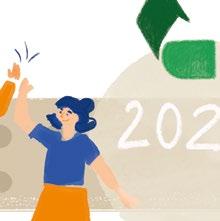

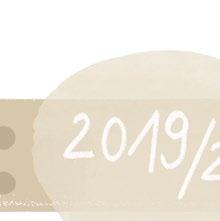
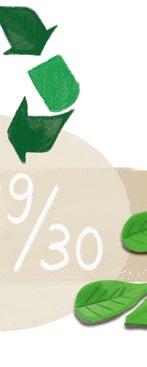
Reduction in company-wide carbon footprint by 55% by 2029/30 (reference year 2019/20)
Gender equality
We want to achieve an even distribution of male and female managers.
Target
50% proportion of women in management positions by 2029/30 (reference year 2019/20)
Our Targets and Initiatives 40
Plastic
Energy
We want to avoid single-use plastic-based packaging and replace it with cardboard or other more eco-friendly materials where possible.
Target Reduce the proportion of new plastics in single-use packaging to less than 5% by 2029/30 (reference year 2019/20)

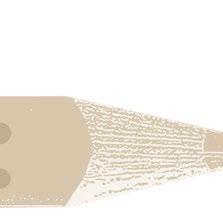

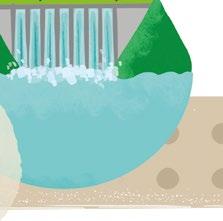







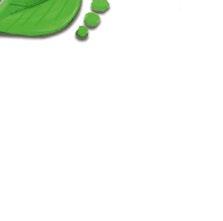





















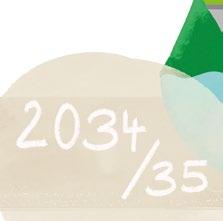
We aim to replace the new plastics we use in our products with alternatives such as recycled, organically-based or biodegradable plastics without affecting quality.
Target

Increase the proportion of alternative plastics to 55% by 2029/30 (reference year 2019/20)
We aim to keep reducing our company’s energy needs. To do so, we make every effort to switch to more energy-efficient equipment in all our international production sites.

Target Reduction in energy consumption by 55% by 2029/30 (reference year 2019/20)
We want to work in an energy self-sufficient manner using independent, in-house energy supplies with renewable energy, for instance by installing solar collectors, heat pumps or water turbines.
Target Energy self-sufficient from 2034/45 (reference year 2019/20)

Our Targets and Initiatives 41





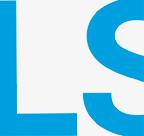
Our Targets and Initiatives 42
The United Nations’ Sustainable Development Goals
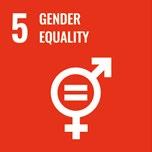
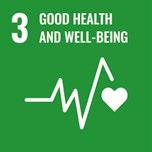

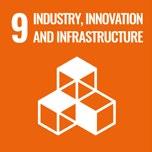
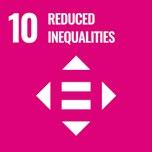
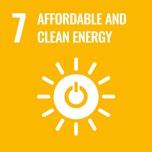
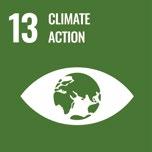
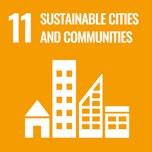

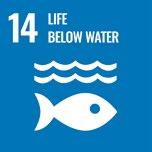



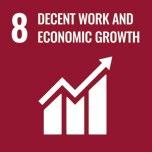

The United Nations General Assembly adopted the Sus tainable Development Goals (SDGs) in 2015. The UN’s sustainability goals reflect the most important factors for the creation of a world community by 2030 that is eco nomically, socially and environmentally sustainable. It is groundbreaking in this respect that all associated states of the United Nations have committed themselves to the concrete goals and that a broad civil society has worked together to develop the goals. In order for the ambitious goals to be achieved, all central actors – from the general population, science, states, local authorities and the private sector – are called upon to participate in Agenda 2030 and the change process.
As a first step, Faber-Castell prepared an environment analysis in order to prioritise the 17 goals in terms of their relevance to the company and to define fields of action.
The projects already initiated by Faber-Castell were com pared and associated with the SDGs. Over the coming years, the analysis and work on the UN goals is to be further expanded.
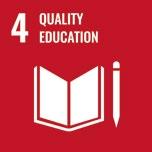
 The 17 Sustainable Development Goals of the United Nations
The 17 Sustainable Development Goals of the United Nations
Our Targets and Initiatives 43
Targets and Initiatives
Community involvement
The aims No. 1: No poverty No. 2: Zero hunger






No. 3: Good health and well-being

No. 4: Quality education No. 5: Gender equality No. 10: Fewer inequalities are an integral part of the aim of humane work and economic growth for Faber-Castell.

The goals can be supported through complying with the Social Charter, since Faber-Castell employees, for example, have safe working conditions, receive regular fair payments and also have access to clean drinking water.
Graf von Faber-Castell Children’s Fund Foundation
The well-being of children has always played an important role for Faber-Castell. This is why Count Anton Wolfgang von Faber-Castell (8th generation) launched a children’s fund foundation in 2001. Ever since then, this charity has supported humanitarian chil dren's aid projects in nurseries, schools, children's hospitals and orphanages, espe cially in emerging countries. The “Little Flower” project, for example, is dedicated to the care and support of young and adult patients in a small village in northern India. Last year, the donations made by Graf von Faber-Castell Children’s Fund Foundation allowed for bunk beds to be built, mattresses to be bought and the furniture to be improved. It also provided teaching materials.
Project Tabaluga from Eberhard Faber
Tabaluga is a small green dragon who is sent on an adventurous journey by his father. On this journey he has experiences that are familiar to children: he is scared, he en counters hatred, he seeks love, finds friendship and discovers a joy for life. Tabaluga stands for a world in which tolerance, social competence and non-violence take centre stage. The little dragon is the mascot of the Peter Maffay Foundation for traumatised children. Every year about 500 children take advantage of the foundation’s therapeutic services. One particular aim of the foundation is to encourage children’s imagination and creativity. The foundation seeks to make children strong: it helps them overcome negative experiences and gain new strength. Some of the proceeds from the sale of Eberhard Faber’s Tabaluga products go directly to the Peter Maffay Foundation and thus support its work.
Our Targets and Initiatives 44
Children of the World Project (Caras & Cores)
Giving children the opportunity to draw a good representation of their own skin colour strengthens their self-image and identity. However, the colour spectrum of many coloured pencil sets, especially for children, is limited. To date it has not been possible to represent the different pigmentation of the skin without compromise. The six skin colour pencils developed with the help of make-up experts can be mixed together to create every shade of colour. They are part of a standard coloured pencil set, so there is no need to buy a separate skin colour set. The pencils used to represent skin tones are therefore a valuable, creative tool in the important phase of self-discovery and growing up. In this way, Faber-Castell is supporting parents and teachers in their edu cational work. Proceeds from the sale go to the Red Pencil Humanitarian Mission, which supports children in crisis areas with painting therapies.
Faber-Castell Brazil’s social engagement
Faber-Castell has worked closely with local communities for many years to allow the population to partake in the company's economic success. The Faber-Castell Institute offers a system of support and education measures, supported by voluntary donations from our employees. The company doubles every Brazilian real (R$) voluntarily donated by our employees, increasing the donation fund to support communities where the need is greatest.
Some of our latest projects:
a) Crèche Dalela Tannús, Prata
Financial support for a local daycare centre in Prata for around 160 children up to six years old. Currently, there are 17 carers looking after the children.

b) Madre Cabrini, São Carlos

The project in São Carlos supports about 120 children from precarious family situations who, among other things, are facing domestic violence and other types of abuse. This day care facility provides children aged 6 to 14 years with protection and care, leisure activities, homework help and food. It also offers training courses to teens and adults. 9 full-time employees and 20 volunteers have kept this flagship project alive for many years.
c) ADEFAV, São Paulo
The NGO has set itself the goal of socially and educationally supporting people with deafblindness, visual impairments and/or multiple disabilities through intervention, rehabilitation and family training. The aid for 45 children with multiple disabilities aged 0 to 18 years is supported through donations from individuals and state enterprises. The support of Faber-Castell meant the swimming pool could be renovated and the building refurbished.

d) Julião community, Manaus
This community is located on the banks of the Rio Negro, 30 minutes by boat from Manaus. 60 families live there, mainly on welfare. Around 40 children aged from 3 to 12 years attend the state school and usually leave after year 5. Faber-Castell helped set up a better social infrastructure, for example by building a sports field with toilets and a multi-purpose area.
Our Targets and Initiatives 45
e) Donations and campaign against hunger
Understanding that the impacts of the pandemic are a common challenge and that we could go beyond actions for our employees and their families, we also took action in order to help the communities around our operations in Brazil.
Our actions were divided in two fronts:
1) Donations: We donated liquid alcohol to Health Institutions in São Carlos, Prata and Manaus, ICU Equipment to Santa Casa (Hospital) in São Carlos, Oxygen to a Hospital in Prata and Cleaning Supplies and Food for institutions in São Carlos, Prata and Manaus.
2) Campaign against hunger: In the first quarter of 2021, we started a campaign through the Faber-Castell Institute aiming to provide food to almost 2,000 children and families in needs. The value of voluntary donation from our employees are matched by the Faber-Castell Institute and then reverted into food baskets donated to institutions in the cities where are factories are located in Brazil.
f) Diversity and inclusion
Respect and integrity have always been part of the Faber-Castell culture. In order to further these issues in the light of current debate, we started a program in 2020 that is aimed at stimulating more diversity and inclusion to our sites in Brazil.
We reinforced our commitments by implementing a policy dedicated to the Diversity & Inclusion theme and created four action fronts: People with Disabilities, Women, Racial and LGBTQIA+. In addition to campaigns and training focused on these themes, we created committees that, through regular meetings, allow the participation of all our em ployees to discuss needs and actions for an increasingly diverse and inclusive culture.

Our Targets and Initiatives 46
Strategy for alternative plastic resources and initiatives












Faber-Castell has set itself the aim of continuously reducing the use of conventional plastics. This aim will be achieved through the increased use of recycled plastic as a raw material (especially for products). In addition, single-use or disposable packaging is to be replaced by more eco-friendly materials like paper or recycled plastic.


Recycled plastic products from Faber-Castell Peru





Faber-Castell Peru focuses on the use of recycled materials. They are working with local and North American suppliers to also keep the environmental impact of the supply chain and transport routes low. One ballpoint pen and seven markers have already been produced using recycled post-industrial materials (as per EN ISO 14021).

Trilux Style ballpoint pen standard colours Winner whiteboard marker 123, 152 Winner water-based marker 47 Jumbo permanent marker 23 Jumbo whiteboard marker 123, 123R Jumbo water-based
47
marker
82% 84% 83% 82% 84% 88% Recycledplas t i c Our Targets and Initiatives 47
Faber-Castell Peru is switching from plastic to cardboard packaging
Plastic packaging is an increasing environmental problem. This is why Faber-Castell Peru has taken its first step and switched children's marker packaging to cardboard.
By 2020, 23 items (SKUs) had already been switched to recyclable cardboard packaging. On this basis, new packaging designs and alternatives made from cardboard will be developed for the blister cards (plastic covers).

Recycled plastic products from Faber-Castell Germany in sustainable packaging
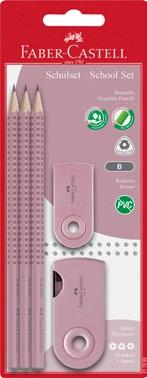
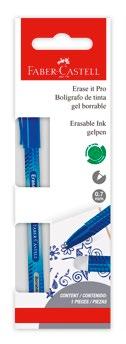


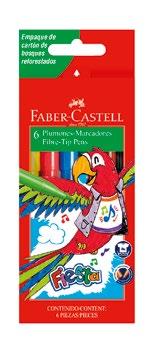
Working closely with the production site in Austria, some environmental improvements have been made in the markers produced there. Firstly, the Textliner 46 was converted to recycled plastic. The housing (cap and barrel) consists of 100% recycled plastic. The packaging is also completely made from recycled plastic, putting the finishing touch on the concept.
Furthermore, there is a Special Edition on the theme of “Travel” with the Textliner 46s in eco-friendly cardboard packaging. The promotional display consists of 100% recycled plastic.
Faber-Castell Germany is converting the blister packs to recycled material
Another project from Germany to reduce conventional plastics is the conversion of the blister packs. Their conventional plastic blister packs have been switched to 95% recycled plastic packs.
100% recycledp la s t i c P l a s t icpackaging 100% recycledp la s t i c Barrelandcap 95% recycledp la s t i c P asticpackaging Recyclablecardbo a r d C a r d boardpackaging 48 Our Targets and Initiatives
The Eberhard Faber paintbox made from 100% recycled plastic One of Eberhard Faber's primary concerns is closing loops and making waste products usable again as secondary raw materials. This means we save natural resources and achieve a sustainable improvement in our environmental and climate protection. The Green Winner paintbox is made from 100% recycled plastic and is made in Germany. Eberhard Faber has taken the next step in climate protection and has produced the Green Winner, among other products, in a carbon-neutral manner in collaboration with ClimatePartner.

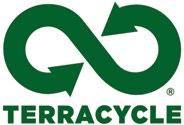
The cooperation between Faber-Castell Brazil and TerraCycle Faber-Castell Brazil is cooperating with the recycling company TerraCycle, which organises the reuse of plastic from pencil waste. Non-refillable plastic writing instruments and accessories such as ballpoint pens, markers, erasers or sharpeners are collected centrally and processed into new raw materials. In this way Faber-Castell not only reduces its waste volumes, but also optimises the use of resources.
June 2018 June 2019 October 2020 Change
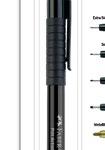



Participants 3,736 4,383 5,252 +20% Total number of items collected 1,389,145 1,773,093 2,034,825 +15%
Faber-Castell New Zealand is switching to sustainable blister packs
Here, packaging was switched to 100% FSC®-certified card, the printed colours are made from food-grade soy inks – all made in New Zealand and 100% recyclable. The new (locally produced) blister packs are made from soft, food-grade PVC with the #R3 stamp, which means that they have already been recycled for the third time, meaning that they are both recycled and recyclable.

49 Our Targets and Initiatives
Use of certified wood and extended use of local timber resources







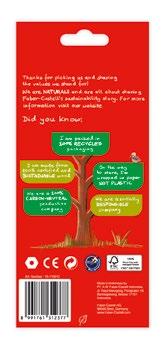
All wood-cased pencils produced by Faber-Castell are made of certified wood. Faber-Castell is also currently working on using more local resources to minimise transport routes.
The Grip colour and graphite pencils from Faber-Castell Germany

All Colour and Jumbo Grip pencils make a significant contribution to climate protection: They are made from wood from sustainably managed forests, covered with eco-friendly water-based paint and their manufacture in Germany is climate-neutral.
The “Naturals” concept of Faber-Castell Australia
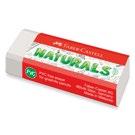

The "Naturals” range consists of sustainable colour pencils, graphite pencils and erasers. The wood-cased pencils are made from FSC® certified wood, meaning they come from sustainably managed forests. The erasers are PVC-free and are manufactured without plasticisers. No plastic is used in the packaging, 100% recycled cardboard is used instead. The wood-cased pencils are made by Faber-Castell Indonesia and the erasers by Faber-Castell Malaysia.

k t i no Cbra o n -
50 Our Targets and Initiatives
KlimaneutraleProdu
neutralproduction
The cooperation between Faber-Castell Malaysia and WWF Malaysia




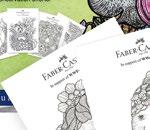



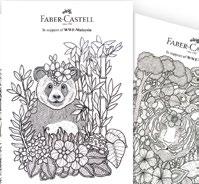

The extinction of species is progressing rapidly: the number of wild animal species has declined by 70% since 1970.2 Malaysia is one of 17 megadiversity countries, which means that together these countries have a high density of biodiversity and are home to around 70% of terrestrial species3. Faber-Castell Malaysia began cooperating with WWF Malaysia in order to raise awareness of the problem of endangered species in the country. Together with Malaysian artist Marty Wood, Faber-Castell designed postcards with motifs of endangered species to colour in. They are part of a themed set with Goldfarber colour pencils made from sustainable wood and in a climateneutral fashion. By purchasing this Limited Edition, the consumer is helping to protect the species through WWF Malaysia projects. Cardboard sleeve and postcards are certified FSC® Mix or FSC® Recycled.
neutralproduction

KlimaneutraleProdu
2 WWFs living planet report 2020, page 1 https://wwfeu.awsassets.panda.org/downloads/ lpr_2020_media_summary_embargo_10_09_20.pdf
3 https://www.biodiversitya-z.org/content/megadiverse-countries
k t
i no Cbra o n -
51 Our Targets and Initiatives
Reducing the carbon footprint


Alongside the annual compensation for the corporate carbon footprint, Faber-Castell has set itself the aim of also continuously reducing this footprint. Across the Group, freight and power consumption are the main CO2 sources that are to be reduced by a number of targeted initiatives. For example, Faber-Castell is already using 100% green electricity in our plants in Peru, Brazil, Austria and Germany (since January 2020). In order to further increase the proportion of climate-neutral energy sources, solar projects are currently being implemented in our Southeast Asian sites. In addition, we have also begun to observe the environmental impact of selected products (in-house production and retail products).
Faber-Castell Malaysia installed a solar power system

Solar cells are currently being installs on the roof of the factory in Kuala Lumpur in order to reduce both the carbon footprint and costs. The project is due to be commissioned in December 2020. Initial estimates result in an annual savings potential of 1.2 tonnes of CO2

Power consumption reduction project in Faber-Castell's cooling tower in Indonesia
Replacing the pump motor and installing a temperature regulator in the cooling tower at the Faber at the Faber-Castell factory in Indonesia meant that its average daily power consumption was halved from 0.50 MWh to 0.25 MWh. At the desired temperature, the pump motor shuts down and interrupts the electricity and water supply for cooling, so that resources are used more efficiently.
52 Our Targets and Initiatives
Carbon neutral products

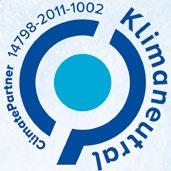







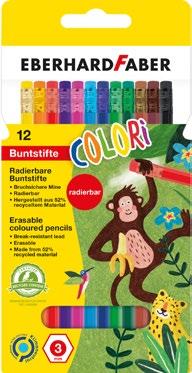
What is the actual climate impact of a product along the supply chain, i.e. from raw material procurement to disposal? Calculating a product's footprint generates transparency in the supply chain, forms the basis for product improvements and changes to reduce environmental impact, and is relevant to eco-conscious customer purchase decisions. In 2020, Eberhard Faber started analysing a wide range of products. Pencils, colour pencils, felt tip pens, watercolours, finger paints and street marking crayons were analysed and evaluated in terms of their overall climate impact. In 2021, this included the highlighter range made by Faber-Castell plus the Multimark pens and fabric markers. The results in terms of the impact of various raw materials, packaging and transport routes can now be used to make products more sustainable in the future. Emissions certificates are gained from climate protection projects to offset emissions. Currently, for example, we are supporting a Plastic Bank project that combines social and environmental factors by offering to exchange plastic waste gathered on the coasts of Haiti, Indonesia and the Philippines for money or food. For each compensated tonne of C02, 10 kilograms of plastic waste are collected.
 See ClimatePartner Website
See ClimatePartner Website
53 Our
and Initiatives
See ClimatePartner Website
Targets
Updating the stakeholder analysis
The existing stakeholder survey will be updated in 2020 and adapted to existing standards and targets, such as the Sustainable Development Goals (SDGs) or Global Reporting Initiative (GRI). The aim of the stakeholder survey is to define and prioritise relevant topics (see page 14).

Other CSR projects
Faber-Castell Brazil installed a water treatment plant
A waste water recycling system was installed at the factory in São Carlos in Brazil in 2018. An additional treatment stage of the sanitary sewage through an ultrafiltration membrane meant that waste water was reduced in the factory. The purified water is used for cleaning outdoor areas and garden irrigation. This meant that, in just over one year after implementation, more than 12,000 m³ of waste water was prevented from entering the urban network.
The efficient use of water project by Faber-Castell Indonesia

Three water tanks, each with a 1,200 litre capacity, collect rain water and deliver effi cient use of water resources. Using the rain water instead of fresh water in sewage treatment meant that 5 months of fresh water were saved in waste water treatment.

54 Our Targets and Initiatives

55 Our
Targets and Initiatives
56
Appendix
57
GRI Raw materials (tonnes) Unit 2017/18 FY 2018/19 FY 2019/20 FY 2020/21 FY Δ 19/20 –20/21
301 Wood (boards) t 17,850 16,645 15,891 17,547 +10%
Plastics (conventional) t 9,932 8,773 7,261 4,462 -39% Plastics (recycled) t 3 47 76 144 +89%
Clay t 157 358 349 140 -60% Graphite t 413 444 335 196 -41% Kaolin t 3,675 3,586 3,138 3,437 +10%
Water-based varnish t 82 98 86 72 -16%
Paint with organic solvents t 872 855 785 763 -3%
Paper packaging t 7,209 6,312 6,045 6,143 +2% Plastic packaging t 2,134 2,087 1,806 1,447 -20% Total packaging t 9,343 8,399 7,851 7,590 -3%
GRI Raw materials (tonnes) Unit 2017/18 FY 2018/19 FY 2019/20 FY 2020/21 FY Δ 19/20 –20/21
303 Total water m3 307,398 307,977 273,602 248,611 -9%
GRI Non-renewable energy Unit 2017/18 FY 2018/19 FY 2019/20 FY 2020/21 FY Δ 19/20 –20/21
302 Natural gas MWh 9,711 95,81 93,73 11,113 +19%
Liquid gas MWh 1,048 1,021 1,018 775 -24%
Diesel MWh 1,650 1,293 1,242 1,121 -10%
Petrol MWh 1,132 836 776 578 -26%
Heating oil MWh 132 128 76 43 -43%
Total non-renewable energy MWh 13,673 12,859 12,485 13,631 +9%
GRI Renewable energy Unit 2017/18 FY 2018/19 FY 2019/20 FY 2020/21 FY Δ 19/20 –20/21
302 Energy (hydropower) MWh 1,444 1,703 1,856 2,002 +8%
Bioethanol MWh 40 11 28 10 -66%
Biodiesel MWh 189 206 243 275 +13%
Biomass MWh 126,844 116,834 102,343 115,649 +13%
Wood pellets MWh 3,018 2,933 2,949 2,631 -11%
Total renewable energy MWh 131,535 121,687 107,420 120,863 -12%
GRI Electricity Unit 2017/18 FY 2018/19 FY 2019/20 FY 2020/21 FY Δ 19/20 –20/21
302
Renewable energy MWh 40,849 40,902 44,551 38,893 -13%
Non-renewable energy MWh 21,347 20,346 12,121 8,223 -32%
Mix MWh 2,756 3,013 2,397 1,785 -26%
Total electricity MWh 64,952 64,261 59,069 48,901 -17%
District heating MWh 542 456 434 429 -1%
Input
Appendix 58
Wood
As a result of weaker sales, the volume of wood purchased has fallen continuously in recent years, but in the 2020/21 financial year there was a slight increase of ten per cent. The increase is due to a higher purchase volume of the cosmetics sector. However, this is not reflected in the output figures, as some orders were cancelled due to the pandemic, but due to the long delivery times, the wood requirement quantities could no longer be adjusted at short notice. Faber-Castell only uses wood from sustainably managed sources for the production of wood-cased pencils. This self-imposed standard of only using externally certified wood (FSC®, PEFC) for the production of wood-cased pencils is just as important as regulatory compliance, for example with the EU Timber Regulation, SVLK system (Indonesia), Lacey Act (USA), and the Australian Illegal Logging Prohibition Act.
Plastic
The demand for conventional plastics fell by 39 per cent as of the 2020/21 financial year and goes hand in hand with the decline in plastic product production. On the other hand, the share of recycled plastic has risen sharply. Thus, 144 tonnes of recycled plastic were purchased in the 2020/21 financial year, an increase of 89 per cent compared to the previous year, when only 76 tonnes were procured. The recycled material was used in the plants in Austria, Germany and Peru. The use of conventional plastic as a product component as well as a packaging material is already being gradually reduced worldwide. Faber-Castell is currently working on a concept for the use of alternative materials, alongside the use of recycled plastic. For example, more fibre-based (paper) packaging will be used. The alternatives to plastic currently being researched are subject to stringent quality standards: they must equally well protect our pencils from drying out and, for example, maintain their function and stability even in hot, tropical climates.

Graphite, clay and kaolin
Purchased quantities of graphite decreased by 41 per cent in the 2020/21 financial year, as fewer pencils were produced at all wood-processing sites. The use of kaolin, however, which is used for crayon production, increased by ten per cent to 3,437 tonnes. The demand for the raw material clay fell by 60% due to lower production orders.
Water
The volume of water purchased at the production sites fell by nine per cent compared to the 2019/20 financial year. This is mainly due to lower production capacity utilisation. In 2021, Faber-Castell carried out a risk analysis specifically geared to water as a resource,
evaluating the risk of groundwater and surface water contamination. No corporate risks in the area of water management were identified. Compliance with national standards and legal regulations ensures that no water bodies are polluted. This is also verified by external audits such as ISO 14001. There is also no operational, process-specific risk of a lack of water availability, as Faber-Castell is not active in any particularly waterintensive industry.
Natural and liquefied petroleum
The demand for natural gas increased by 19 per cent, because the demand in Germany was slightly higher and the cosmetics plant in the USA was included in the calculation for the first time – without this, the increase would have been 10 per cent. The demand for liquefied petroleum gas, on the other hand, fell by 24 per cent; Peru in particular required 57 per cent less liquefied petroleum gas due to an extensive plant closure.
Petrol
Petrol consumption for the sites fell by 26 per cent to 578 MWh, as the sites in Peru, Colombia and India in particular had less demand due to the corona-related decline in production.
Fuel oil
The demand for fuel oil fell by 43 per cent in the 2020/21 financial year. The reason for this is that India had to generate less electricity using generators, as there were fewer grid outages. Indonesia was also able to reduce its demand for fuel oil, as some equipment that runs on fuel oil was not used in the last financial year.
Bioethanol


Bioethanol is used by Brazil. However, the price has risen sharply, so less has been purchased here and alcohol is no longer used in paint production. Therefore, there was a decline of 66 per cent.
Electricity
Overall, the demand for purchased electricity decreased by 17 per cent, which is also due to the lower production volumes in the 2020/21 financial year. Electricity from renewable sources fell by 13 per cent and electricity from non-renewable sources by 32 per cent. Austria, Brazil, Peru and Germany already purchase 100 per cent green electricity. Overall, the share of renewable energy with self-produced electricity from hydropower and solar power is 80 per cent.
59
Products Unit 2017/18 FY 2018/19 FY 2019/20 FY 2020/21 FY Δ 19/20 –20/21
Wood-cased pencils in million pcs. Million pcs. 2,211 2,106 2,120 1,900 -10%
Ink writing instruments, markers, erasers and writing accessories Million pcs. 1,083 1,084 982 566 -42%
Other products Million pcs. 356 356 315 226 -28%
Produced ink Litres / kg 937,702 947,746 893,393 564,957 -37%
Total writing instruments Million pcs. 3,295 3,190 3,102 2,467 -20%
All products (excluding ink) Million pcs. 3,651 3,546 3,427 2,692 -21%
GRI Waste water (m3) 2017/18 FY 2018/19 FY 2019/20 FY 2020/21 FY Δ 19/20 –20/21
306 Waste water m3 179,011 159,661 119,583 89,917 -25%
GRI Emissions 2017/18 FY 2018/19 FY 2019/20 FY 2020/21 FY Δ 19/20 –20/21
305 VOC emissions from paint coating t 143 142 116 103 -12%
Boundaries –average during the day
dB(A) 63 61 60 62 +3%
Boundaries –average at night dB(A) 56 54 53 54 +2%
GRI CO² emissions (t CO2e)
2017/18 FY 2018/19 FY 2019/20 FY 2020/21 FY Δ 19/20 –20/21
305 Scope 1 t CO2e 6,050 4,906 4,372 5,060 +16% Scope 2 t CO2e 27,742 27,554 20,843 14,940 -28%
Scope 3 t CO2e 13,663 15,786 9,871 6,312 -36%
Total CO2e t CO2e 47,454 48,246 35,085 26,312 -25%
GRI Waste (t) 2017/18 FY 2018/19 FY 2019/20 FY 2020/21 FY Δ 19/20 –20/21
306 Hazardous waste t 630 674 630 391 -38% Household waste t 5,423 4,167 4,135 4,980 +20% Total waste t 6,054 4,841 4,764 5,371 +13%
Output
60 Appendix
Wood-cased pencils
The production of wood-cased pencils fell moderately by ten per cent in the 2020/21 financial year. Due to long-term ordering processes, this is not reflected in the input figures for purchased wooden boards, which increased slightly by ten per cent.

Plastic-based writing instruments and products
The share of plastic-based writing instruments fell by 42 per cent to 566 million units compared to the 2019/20 financial year. Peru, Malaysia, India and Brazil in particular had sharp production declines due to COVID-19 and temporary production closures.
Waste water
As in previous years, waste water was reduced by 25 per cent. This was due to a lower water demand due to lower production utilisation.
CO2 emissions

Total emissions fell by 25 per cent in the 2020/21 financial year due to the increased use of renewable energies and reduced Scope 3 emissions as a result of hardly any business trips being undertaken.
Waste disposal

The total amount of waste increased by 13 per cent in 2020/21 compared to the previous year. The reason for this is the new inclusion of the North American cosmetics plant in the data analysis.

61
Social Indicators
GRI Employees Unit FY 2017/18 FY 2018/19 FY 2019/20 FY 2020/21 Δ 19/20 –20/21
405 Number of employees worldwide Number 8,215 7,864 7,176 6,665 -7%
Proportion of women Number 3,478 3,409 3,154 2,803 -11% % 42% 43% 44% 42%
Proportion of employees with a disability Number 128 115 119 142 +20% % 1,6% 1,5% 1,7% 2,1%
Proportion of employees in administration Number 2,443 2,363 2,310 2,130 -8% % 30% 30% 32% 32%
Proportion of employees in production Number 5,772 5,501 4,866 4,535 -7% % 70% 70% 68% 68%
Proportion of employees with permanent contracts Number 6,402 6,065 5,765 5,443 -6% % 78% 77% 80% 82%
Proportion of employees who are employed via agencies Number 273 377 305 208 -32% % 3% 5% 4% 3%
Number of trainees (Germany) Number 25 29 31 32 +3%
Proportion of women in manage ment positions (level 1 and 2) (from FY 2020/21 incl. Germany)
Number 56 62 54 60 +11% % 30% 33% 34% 30%
GRI Social Charter Unit FY 2017/18 FY 2018/19 FY 2019/20 FY 2020/21
407 Participation of production and sales sites % 100% 100% 100% 100%
Production sites with collective agreements % 87% 88% 88% 81%
GRI Sickness, injuries, deaths Unit FY 2017/18 FY 2018/19 FY 2019/20 FY 2020/21 Δ 19/20 –20/21
403 First responders with training Number 775 733 754 678 -10% % 9% 9% 11% 10%
Reportable accidents (including commuting accidents) Number 88 88 75 56 -25%
Fatal workplace accidents Number 0 0 0 0
GRI Employees Unit FY 2017/18 FY 2018/19 FY 2019/20 FY 2020/21 Δ 19/20 –20/21
406 Reported corruption and discrimination incidents Number 0 0 0 0
Appendix 62

63
https://www.faber-castell.com/corporate/sustainability/sustainability-fact-sheets
Publisher Faber-Castell Aktiengesellschaft, Nürnberger Straße 2, D-90546 Stein Lead Editor Dr. Mathias Makowski, Vice President Engineering & Technical Sustainability Dominique Weiß, Vice President Marketing International
Editor Sarah Riffelmacher, Christianna Roth, Dr. Susanne Veldung, Katharina Regnet
Layout Susanne Pickl – (N)aimless, Noris-Repro GmbH

















































































































































































































































































































































































































 The 17 Sustainable Development Goals of the United Nations
The 17 Sustainable Development Goals of the United Nations



























































 See ClimatePartner Website
See ClimatePartner Website





